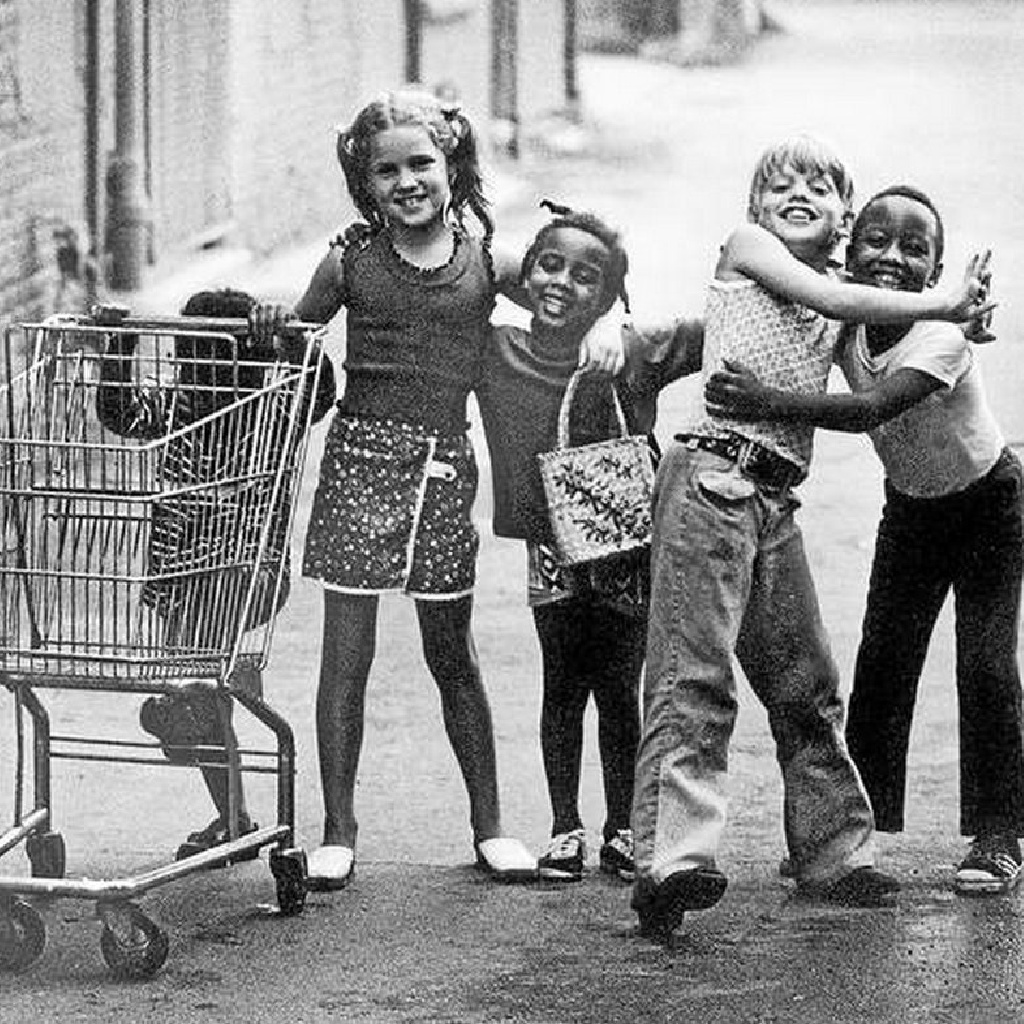You’re hurting emotionally. What does that mean? And what should we do about it?
For nearly three decades, authoritative answers to the first question have centered on presumed deficiencies in the brain or body—ultimately directing people away from the details of what’s going on in someone’s current life, along with past experiences that may still be influencing mental health today.
Once we take this problem definition for granted, our talk of solutions is naturally bounded too—with expert answers to the second question likewise often directing people’s attention away from tangible adjustments to life that could make a difference, and instead encouraging trust in various external remedies to correct the aforementioned deficiencies.
All of that made sense—and even felt reassuring—when we believed that good science was backing up these explanations and recommendations. Who wouldn’t be excited about ingenious human inventions capable of making depression stop (or at least reducing it significantly)— without other real or sustained changes to your life?
It seemed to some almost too good to be true. And it really was.
Goodbye serotonin imbalance theory. My friend and colleague, Dr. Jeffrey Lacasse at Florida State University, has been cautioning people for over a decade and a half about overstated claims of an enduring chemical imbalance behind mental illness compared with the available research (see here in 2008, here in 2012 and here in 2015).
His 2005 article with Dr. Jonathan Leo, “Serotonin and Depression: A Disconnect between the Advertisements and the Scientific Literature,” made some early waves by juxtaposing what scientists were saying at the time compared with what company advertisements were positing. Nearly 20 years ago, this is what leading researchers were acknowledging:
- “Although it is stated with great confidence that depressed people have a serotonin or norepinephrine deficiency, the evidence actually contradicts these claims” (Neuroscientist Elliot Valenstein, 1998, University of Michigan).
- “I spent the first several years of my career doing full-time research on brain serotonin metabolism, but I never saw any convincing evidence that any psychiatric disorder, including depression, results from a deficiency in brain serotonin. In fact, we cannot measure brain serotonin levels in living human beings, so there is no way to test this theory” (Dr. David Healy, 2004, former secretary for the British Association for Psychopharmacology).
- “We have hunted for big simple neurochemical explanations for psychiatric disorders and have not found them” (Dr. Kenneth Kendler, 2005, Editor, Psychological Medicine).
Despite the limitations evident even then in the scientific evidence, here is a sampling of what the advertisements were saying at the time:
- “To help bring serotonin levels closer to normal, the medicine doctors now prescribe most often is Prozac.”
- “Paxil, the most prescribed medication of its kind for generalized anxiety, works to correct the chemical imbalance believed to cause the disorder.”
- “Depression may be related to an imbalance of natural chemicals between nerve cells in the brain. Prescription Zoloft works to correct this imbalance. You just shouldn’t have to feel this anymore.”
Only in recent weeks has the general public began to more broadly recognize the discrepancy between this popular notion and scientific reality itself, in the wake of a groundbreaking systematic review published in the Journal of Molecular Psychology which concluded forcefully that “it is time to acknowledge that the serotonin theory of depression is not empirically substantiated.”
Even so, the authors add, “The chemical imbalance theory of depression is still put forward by professionals” and “the general public widely believes that depression has been convincingly demonstrated to be the result of serotonin or other chemical abnormalities.”
Consequently, they note, “this belief shapes how people understand their moods, leading to a pessimistic outlook on the outcome of depression and negative expectancies about the possibility of self-regulation of mood.” In other words, those who come to believe that their own brain is deficient end up seeing their own prognosis as worse and feeling less confident about the potential impact of non-medical interventions (see here in 2009, here in 2013, here in 2014, and here in 2020.) As one woman told me, “Exercise doesn’t help me because I have a chemical imbalance.”
Note: Please do not make any sudden and abrupt changes to your medical care, especially on your own without support. Dosage changes, especially when they happen quickly, are when it’s most likely to experience difficult and adverse effects. If there are changes in this regard that could benefit your healing, please gather close to you people who can support you, and ideally consult with a physician or other medical professional to involve their supervision.
Hello inflammation, microbiome and trauma theories. None of this, of course, means that depression and other mental illness isn’t biological. It definitely is—just not in the way we’ve all been led to believe.
One of the theories with the most momentum and scholarship centers on inflammation in the brain and body, similar to other physical illnesses. This inflammation is connected not to deficient serotonin but to excess cortisol (the stress hormone). A good summary of this research is in “The Inflamed Mind” by University of Cambridge professor of psychiatry Edward Bullmore or “Brain Inflamed” by Dr. Kenneth Bock, with a focus on teenage mental health.
Another prominent biological theory centers on the emotional implications of our gut health—called the “microbiome”—based on what we take in on a daily basis. A good summary of that research is found in “The Mind-Gut Connection” by Dr. Emeran Mayer, executive director of the UCLA Center for Neurobiology of Stress. “The Better Brain” is also excellent, authored by the two leading international researchers on nutrition and mental health, Drs. Julia Rucklidge and Bonnie Kaplan, who I had the pleasure of interviewing several years ago in New York.
While this physiological evidence is fascinating, it paints an incomplete picture without a third biological theory. Bessel van der Kolk’s “The Body Keeps the Score” is arguably the most important contribution to mental health in two decades—outlining how past trauma impacts us in the present through the body—rather than only through mental and emotional residue alone. Dr. Bruce Perry’s “What Happened to You?: Conversations on Trauma, Resilience, and Healing” is a more readable accounting of the broader research and is also highly recommended.
What are we to make of all this? Latter-day Saints might recognize it as “further light and knowledge” in a realm where we dearly need it.
What does it all have in common? One thing in particular: hope. All three biological theories highlight physical realities that are changeable and modifiable through patient and gradual efforts over time.
This is a sharp contrast to prior theories focused on enduring chemical imbalances and inexorable genetic predispositions. By comparison, a focus on inflammation, gut health, and trauma response redirects attention to human choice and behavior in the present moment—and steps we might take to find healing.
Real-life positive consequences. All this is profoundly good news—with distinct personal implications that flow from these alternative narratives of physiology, as Ed Gantt and I argued in 2014 with Dr. Jeff Lacasse at Florida State and neuroscientist Nathan Vierling-Claassen Brown University in “Narrating the Brain: Investigating Contrasting Portrayals of the Embodiment of Mental Disorder.”
Which brings us back to you—who may still be hurting emotionally. Imagine, for a moment, what it would be like to experience a mental health system centered not on presumed permanent limitations in your body—but instead on limitations in our awareness and understanding, along with associated adjustments to our lives that targeted learning could prompt.
In at least two ways, this could revolutionize the mental health systems on which we’ve come to depend:
1. Diagnostics deeper than symptoms. A primary focus on observable symptoms of suffering is one hallmark of our existing mental health system. This is understandable from a classic empirical point of view, wherein conclusions are drawn from the most immediate, observable evidence available. But compared to a previous era when our evidence base was primarily limited to immediate clinical observations, our available scientific literature over the last three decades has exponentially grown and matured enough to confirm a much wider scope of evidence—namely, risk factor studies that illustrate the broad array of root contributors that influence our mental and emotional suffering.
Despite this explosion of knowledge, our approach to mental health assessment remains remarkably focused on symptomatology alone. Years ago, our research team reviewed every available depression assessment and were surprised to find that 95% of them were exclusively focused on symptoms. Another 5% looked at risk factors (most of them examining only a handful).
What are we missing when we avert our eyes from the broader scope of influences in our life in terms of emotional health? I’ll never forget interviewing an older woman who spoke fondly of the first moment early medical treatment had brought her some relief, despite a harrowing and agonizing 15 years since that first moment on medication. When asked about the main lesson from her many years of experience with emotional struggles, she replied: “The importance of getting the right dosage level.”
That was her big takeaway, after more than a decade of suffering and struggle. I’ve never been able to stop thinking about her. It seems to me that when our attention is systematically directed away from patterns in our own lives, there’s no guarantee we’ll learn the lessons that suffering itself might well teach us—lessons that could prove crucial not only for our personal growth, but also for our ultimate well-being emotionally.
Acclaimed journalist Johann Hari’s account of his own depression experience offers a counterpoint to this woman’s story. As he puts it in the closing chapter:
I know this is going to be hard to hear … because I know how deep your suffering cuts. But this pain isn’t your enemy, however much it hurts (oh goodness, I know how much it hurts). It’s your ally—leading you away from [one life] and pointing the way toward a more fulfilling one.
He then underscores:
You are at a fork in the road now. You can try to muffle the signal. That will likely lead you to many years when the pain will persist. Or you can listen to the signal and let it guide you—away from the things that are hurting and draining you, and toward the things that will meet your true needs. Your distress is a signal—a necessary signal. Instead of seeing your depression and anxiety as a form of madness, you need to see the sanity in this sadness. You need to see that it makes sense. Of course, it is excruciating. …[who wouldn’t dread that pain returning?]. But that doesn’t mean the pain is insane or irrational. Depression and anxiety might, in one way, be the sanest reaction you have. It’s a signal, saying—you shouldn’t have to live this way, and if you aren’t helped to find a better path, you will be missing out on so much that is best about being human.
What could it mean if our mental health interventions approaches these risk factors as clues that offer something to teach us—potentially highlighting adjustments to unsettle these vulnerabilities? Instead of primarily aiming to control, manage and moderate symptoms, imagine a mental health system that targeted certain behaviors, experiences, and lifestyle patterns proven to set people up for emotional distress, and make something like depression or anxiety more likely? “You can try to muffle the signal….Or you can listen to the signal and let it guide you.” -Johann Hari
Within that system, a good patient isn’t simply compliant and obedient to protocol. They are part of a Sherlock Holmes expedition to discover more about their life, centered initially on the questions: What does this pain mean? And what is it telling us about your life—and potential adjustments that might help?
Instead of professionals simply going down a list of symptoms to confirm a classic diagnosis, imagine if they spent their 10 minutes—or hour—going down a list of risk factors to confirm the extent of someone’s deeper vulnerability. Or even better, what if we could review this kind of list ourselves?
Professional or patients alike could go through a simple screening, asking themselves: Which of the following risk factors are present in your own situation:
- Poor diet without adequate fruits, vegetables, and healthy fats
- Infrequent physical activity without adequate sunshine
- Poor quality sleep without adequate rejuvenation
- Toxic “mental diet” with a steady intake of depressing and anxious content
- Inadequate “mental rest” without sufficient space, stillness, and silence
- High levels of intense and/or unrelenting stress
- Past serious trauma that has been unresolved
Over the years, we’ve reviewed thousands of mental health studies to identify some of the many empirical patterns and try to summarize them for people’s own self-assessment. See, for instance, this depression risk factor inventory for adults, and this one for children and youth facing depression. We did another one for ADHD here and we are working on completing one for anxiety this fall. Depending on patterns of answers, participants identify areas of vulnerability and strength in their own lives, all of which highlights a range of personalized adjustments each individual can consider.
2. Prescriptions deeper than substances. Once we pivot attention to the range of potential contributors to emotional distress, the next critical question becomes: What life adjustments will unsettle emotional pain and promote healing?
In an Instagram post after several public suicides, Jada Pinkett-Smith acknowledged her own temptation towards suicidal thoughts before saying, “In the years I spent towards my healing, many moons ago, I realized the mind and heart can be extremely delicate without the foundation of a formidable spirit.” She continued:
What I eat, what I watch on TV, what music I listen to, how I care for my body, my spiritual practice, what people I surround myself with, the amount of stress I allow, and so on … either contribute to or deteriorate my mental health.
Then, Smith added, “Mental health is a daily practice for me. It’s a practice of deep self-love.”
What would it mean—could it mean—if the entire mental health system were focused on helping people learn things about their life and identify changes that will make the most difference for their emotional health, while having the social support to do just that? Imagine for a moment all the tremendous resources and energy of our mental health system focused in these directions:
Learning. Growing. Connecting. “Mental health is a daily practice for me. It’s a practice of deep self-love.” -Jada Pinkett-Smith
As I detailed in a previous article, some have also begun studying what happens when you make a coordinated set of adjustments to multiple lifestyle areas at the same time. The results are frankly stunning, with a majority of people who are supported in making comprehensive lifestyle adjustments finding lasting improvement in depression symptoms—as in, without relapse.
To make such changes, of course, you need significant social support around you. And some of the most effective interventions, both historically and currently, involve a high level of surrounding support—not just from professionals (which are great when you can find or afford them!), but from neighbors, friends, and family around us.
In my favorite example, first tested in Western Lapland, Finland, people who fell into an acute psychotic episode were surrounded with additional emotional support in a strategic, coordinated manner. For a majority of patients with this extra support, their psychosis passed, and they were able to get back to their lives—with a subset of patients needing some medical support. This Open Dialogue Approach has led to astonishingly good long-term outcomes—with follow-up checks 2 and 5 years later showing 80% of first-episode psychotic patients either employed or back at school. In contrast to American trends, only about one-third of the patients were ever exposed to antipsychotic medication, and only 20% end up taking the drugs on a continual basis.
This combination of support and learning is the basis to our Lift app for depression and anxiety. And it’s the core message behind the non-profit work I’ve been involved in as well:
As we tell people in the middle of their own recovery process with addiction or mental health problems: Keep learning. Keep growing. And keep connecting!
Clearly, this is something that happens in our mental health system—especially with skilled therapists and wise medical practitioners. But it’s not typically what we think of with our mental health system as a whole.
What if this could change?
Just as some doctors have begun to “prescribe exercise” (with an entire “exercise as medicine” movement), we’ve also begun to see physicians prescribing mindfulness programs, dietary changes and urgent recommendations to decrease stress burdens. Rather than just distributing medications, doctors could thus become important teachers and accountability partners, much like they are with heart disease (“you really need to decrease your red meat intake, and start exercising if you want to live to a ripe old age.”) That’s also why many recognize physicians as among the most essential screeners for abuse, since every woman will interact with a doctor on a semi-regular basis.
Among other things, this kind of a shift could bring our mental health system more in harmony with the inspiration behind our faith communities, which universally encourage learning, growth and connection as central means of finding greater healing, peace and happiness.
In both cases, of course, joy does not arise simply from “choosing to be happy.” As those facing depression know, that can be a cruel suggestion in its impossibility—just as “choose to not be so worried” feels to those with serious anxiety or “just choose to take care of your body and eat healthy” feels to someone with an eating disorder. Rather than choosing to feel (or not feel) something inside, the insight here is that we can exercise our agency to choose to do certain other things in our lives (and not do certain things) that will, over time, move our emotional and mental state in the right direction.
There is an urgency to these musings. So many people are hurting—and not just, I’m convinced, because these conditions themselves are painful.
But also because of how we’ve been approaching them.
It’s time to stop believing that doing more of the same thing we’ve been doing will reverse the tragic mental health statistics we are seeing. And it’s past time to explore other creative ways of supporting people—including possibilities of systematically deepening both our self-assessments and the kinds of encouragement we give others. In doing so, we can better highlight the many ways in which learning, growth, and connection can move all of us in the direction of deeper, more lasting emotional healing over time.
None of this requires an enormous new infusion of capitol and resources, by the way. It requires something arguably harder: a new infusion of humility to rethink common assumptions and be open to trying new ways of doing things.
For the sake of the many who are suffering, I pray we’ll rouse ourselves to find that as a people sooner than later.

















